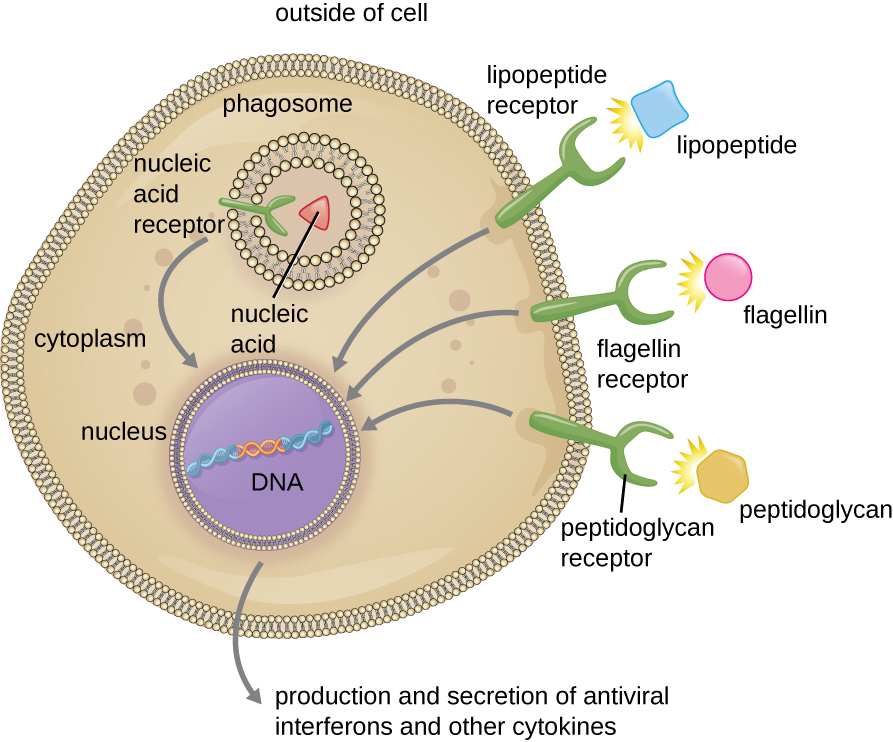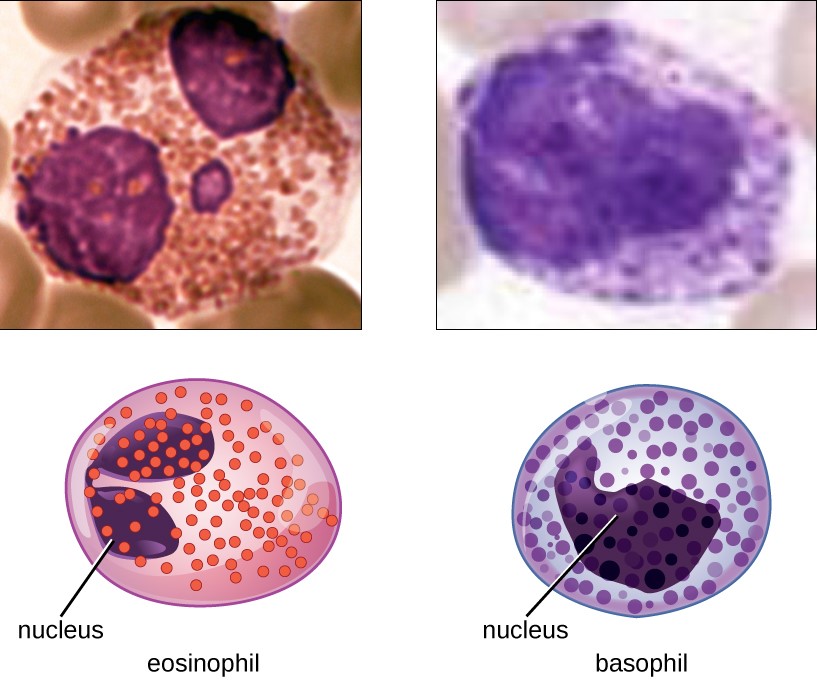Playlist
Show Playlist
Hide Playlist
Acute Phase Response
-
Slides Innate Immune System.pdf
-
Download Lecture Overview
00:01 Another important part of the initial response to infection and tissue damage is something called the acute phase response. And this is involved with enhancing host resistance to infection or damage, to minimizing tissue injury and to promoting the resolution and repair of the inflammatory lesion. As we’ll hear, inflammation, at least acute inflammation is simply the immune system doing its job. It’s a beneficial thing. 00:36 However, there is often a degree of collateral damage, if you like, where some of our body tissues become damaged somewhat by the inflammatory response. 00:47 And a major role for the so called acute phase response is to help promote the resolution and repair of the inflammatory lesion. 01:00 So what exactly is the acute phase response? Well, it’s an immediate response following infection or tissue damage. 01:08 And it involves a changing concentration of many, many different molecules. 01:15 Most of them increase quite dramatically in response to infection or damage. 01:22 A few of them actually decrease in concentration. 01:24 But the majority, they increase in concentration. 01:30 There are many different aspects to acute phase responses, but one of them is that cytokines released following activation through Pathogen Recognition Receptors as we’ve just heard. 01:42 Some of those cytokines can act on the liver, to increase the production up to a thousand fold of the secretion of a variety of acute phase proteins. 01:54 Just going to give you three examples here; these three cytokines, interleukin-1β, interleukin-6 and tumor necrosis factor α, can cause increased production of the acute phase proteins, C-reactive protein (CRP), complement component C3, and fibrinogen which is involved in blood clotting. 02:21 So it’s just three examples of acute phase proteins. 02:24 As I’ve already mentioned, there are many, many, many others. 02:33 So, let’s look now at a little bit more detail at the inflammatory process. 02:40 Originally, there were four cardinal signs of inflammation that were recognized way back in history - heat, redness, swelling, and pain. 02:56 And these are rather unpleasant. 03:01 I’m sure you’ve all had an inflammatory response. 03:05 You’ll know that the area might be a little bit warmer than the rest of your body. 03:10 There’ll be a bit of redness there, be some swelling, may even be slightly painful. 03:16 Seems like it's something that really shouldn’t be happening, but it’s exactly what should be happening. 03:22 It’s simply the immune response doing its job. 03:25 So acute inflammation is the cells and molecules of the immune system going to where they’re needed, causing maybe a few rather unpleasant symptoms, but they will get rid of the infection or the tissue damage. 03:39 It will heal quickly, and everything will be back to normal and you’ll be ridded of the particular infection or tissue damage. 03:49 So why do we have these what may… face value seem rather unpleasant effects from inflammation? Well, the heat and the redness is due to increased blood flow to the site of inflammation. 04:01 You need to get those cells and molecules to where the actual infection is present. 04:07 And of course this also causes swelling, due to an accumulation of fluid and cells in a tissue space that previously wasn’t occupied by these cells and molecules. 04:19 And then pain, due to a pressing on nerve endings due to this increased volume at the area of the infection. 04:31 And then, there's also a fifth cardinal sign of inflammation that was added again, way, way back in history now; these recognized a long time ago. 04:40 Initially the four signs, there was a fifth added, which is loss of function. 04:46 And this can occur during an inflammatory response, particularly if the response is a chronic response. 04:54 But, as you’ll all be aware, very often if you have an acute inflammatory response, maybe you have an abrasion to your finger and you get a few bacteria in there, doesn’t mean that you get a complete loss of function of your finger. But it can happen as a consequence of the immune response. You can end up with a loss of function as being the fifth cardinal sign of inflammation. So you’ve already heard that there are two types of inflammation - acute inflammation and chronic inflammation. Let’s contrast and compare those. 05:30 So the predominant cell type in acute inflammation is the neutrophil. 05:34 This cell is really, you know, characteristic of the acute inflammatory response. 05:40 Whereas in chronic inflammation, there tends to be more of a dominance of the macrophages and the T-lymphocytes. 05:49 The time course is different. 05:52 Acute inflammation has a very rapid onset. 05:57 But usually it’s successful in getting rid of the threat, and is therefore rather short lived. 06:03 Whereas, chronic inflammation has a rather slow onset and tends to carry on as its name suggests; chronic - long term. 06:13 The nature of the response is that the acute response is, as I’ve already mentioned, the immune system doing its job. 06:21 So it’s a physiological response, whereas chronic inflammation tends to be pathological. 06:27 And chronic inflammation only occurs if whatever was stimulating the acute response is not eliminated. 06:35 So we can think of acute inflammation in very general terms as being good. 06:42 And chronic inflammation in very general terms, as being bad and associated with causing disease itself. 06:50 Sometimes we use the term, ‘immunopathology’- pathology actually being caused by the immune response. 06:58 And a chronic inflammatory response is a very good example of that. 07:03 So in acute inflammation, any tissue damage that occurs is usually mild and resolves quickly, whereas in chronic inflammation, there is often a severe and progressive tissue damage.
About the Lecture
The lecture Acute Phase Response by Peter Delves, PhD is from the course Innate Immune System. It contains the following chapters:
- The Acute Phase Response
- Cardinal Signs of Inflammation
- Acute and Chronic Inflammation Comparison
Included Quiz Questions
Which of the following reactants increase during the acute phase response?
- Fibrinogen
- Albumin
- Transthyretin
- Antithrombin
The secretion of positive acute phase proteins is most likely to increase during which of the following conditions?
- Inflammation
- Cancer
- Anemia
- Antibiotic use
- Significant dietary modification
Which of the following is NOT a cardinal sign of inflammation?
- Cyanosis
- Heat
- Redness
- Swelling
- Pain
Which of the following statements regarding acute and chronic inflammation is most accurate?
- Chronic inflammation is more likely to be pathological.
- Acute inflammation is not a physiological response to injury.
- Chronic inflammation mainly involves the neutrophils as the primary type of immune cell.
- Acute inflammation mainly involves the T cells as the primary type of immune cell.
- Chronic inflammation is always severe.
Customer reviews
5,0 of 5 stars
| 5 Stars |
|
2 |
| 4 Stars |
|
0 |
| 3 Stars |
|
0 |
| 2 Stars |
|
0 |
| 1 Star |
|
0 |
thanks a lot Doc... for these videos , really helpful and cleared all my doubts
Finally, You-are-telling-the-TRUTH!! which I didn't really know this inflammatory fact until today I listened to your course! You got me, you saved me! It makes sense! That's why anyone should watch this Immunological Pathology video before the coming Patho course. It's really worth it!!





